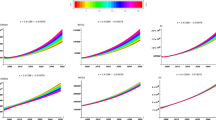Several authors have questioned a direct relationship between environmentaldegradation and migration. In her literature review, Kliot (2001) argues that immediate causation is usually taken for granted but not accompanied by documented evidence. What is typically interpreted as forced environmental migration in developing countries is often an institutionalized mechanism to cope with resource scarcity. Households locate their members in different areas and labor markets so as to diversify risks that cannot be privately insured (Stark, 1991). Remittances may furthermore serve to finance investments in new technologies aimed at diminishing the household’s dependency on fragile natural resources. Against this background, combining migration and innovation is a highly suitable household strategy, especially when households lack access to capital markets. Facilitating credit as a policy measure might therefore provide strong incentives for households to invest in innovations such as improved land use practices and to substitute for migration.
Usually, migration and innovation are associated with substantial structural changes in the rural economy and especially in agriculture. The number of farm households declines considerably, resulting in modified labor/land ratios. Land markets, as well as resource use efficiency, and finally local income levels are directly affected. The outcome of this complex adjustment process is not predictable in a straightforward way. Cumulative causation (or positive feedback) play important roles both for migration and innovation and impinge on the direction of the adjustment path. A conceivable outcome is a new equilibrium in the sending region, both in terms of environmental status and agricultural incomes. Another possible equilibrium outcome is unmitigated environmental depletion and total population displacement.
Access this chapter
Tax calculation will be finalised at checkout
Purchases are for personal use only
Preview
Unable to display preview. Download preview PDF.
Similar content being viewed by others
Author information
Authors and Affiliations
Editor information
Editors and Affiliations
Rights and permissions
Copyright information
© 2004 Kluwer Academic Publishers
About this chapter
Cite this chapter
Berger, T. (2004). Innovation as an Alternative to Migration? Exemplary Results from a Multiple-Agent Programming Model. In: Unruh, J.D., Krol, M.S., Kliot, N. (eds) Environmental Change and its Implications for Population Migration. Advances in Global Change Research, vol 20. Springer, Dordrecht. https://doi.org/10.1007/978-1-4020-2877-9_2
Download citation
DOI: https://doi.org/10.1007/978-1-4020-2877-9_2
Publisher Name: Springer, Dordrecht
Print ISBN: 978-1-4020-2868-7
Online ISBN: 978-1-4020-2877-9
eBook Packages: Springer Book Archive




